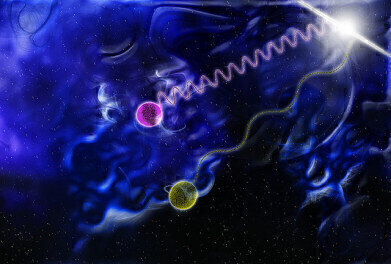News & Views
What is Quantum Teleportation?
Oct 14 2015
Scientists are continually making remarkable new revelations that categorically shake up the world as we know it. Now, a team from the National Institute of Standards and Technology (NIST) is claiming to have set a new distance record for quantum teleportation. And no, we’re not referring to the Star Trek style technique that Captain Kirk used to get himself from A to B. So if it’s not simply a science fiction phenomenon, what is quantum teleportation? Read on as we explain what it is, and what new breakthroughs are currently in the making.
Quantum teleportation 101
Admittedly, the use of the term ‘teleportation’ is a little misleading. While your average person conjures up images of a person being beamed from one point to another, quantum teleportation refers to the transfer of photon data across large distances. To achieve this scientists must reconstruct the quantum state of a photon in a different location. Reassembling this information results in a successful quantum teleportation feat.
Cutting edge ‘QT’ advancements
Scientists have been studying quantum teleportation for years and now, NIST is claiming to have set a new distance record. They successfully managed to transport photon information across 102 kilometres of optical fiber. This is four times what any team has been able to achieve in the past! So how did they do it? The researchers used high tech new single-photon detectors to increase the distance they were able to transport the data. As just 1% of photons make it to the end of the fiber the detectors must be exceptionally sensitive. These ones managed to pick up over 80% of incoming photons which is a previously impossible figure.
"We never could have done this experiment without these new detectors, which can measure this incredibly weak signal," explains NIST’s Marty Stevens.
The findings have been published in Optica journal and explain how the new technique could be used to build “quantum repeaters” that are capable of sending photon data even further. For everyday citizens the perks could mean ultra-encrypted, lighting fast internet as standard!
The fascinating world of photons
If you’d like to delve deeper into the world of photons, ‘Development of a Two Photon Burst Integrated Fluorescence Lifetime System for Single Pair Fret to Analyse Interacting Protein Populations’ is a fascinating read. The authors explore how fluorescence detection of single molecules eliminates ensemble-averaging to create highly accurate techniques for fluorescence-based research in biology and medicine. As the molecules diffuse through a femtoliter volume probed by two photon excitation, time-resolved bursts integrated fluorescence lifetime (BiFL) methodology are used to observe single-molecule dynamics and measure fluorescence lifetime.
Image via Flickr Creative Commons. Source: NASA Goddard Space Flight Center
Digital Edition
Lab Asia 31.2 April 2024
April 2024
In This Edition Chromatography Articles - Approaches to troubleshooting an SPE method for the analysis of oligonucleotides (pt i) - High-precision liquid flow processes demand full fluidic c...
View all digital editions
Events
Apr 28 2024 Montreal, Quebec, Canada
May 05 2024 Seville, Spain
InformEx Zone at CPhl North America
May 07 2024 Pennsylvania, PA, USA
May 14 2024 Oklahoma City, OK, USA
May 15 2024 Birmingham, UK


















